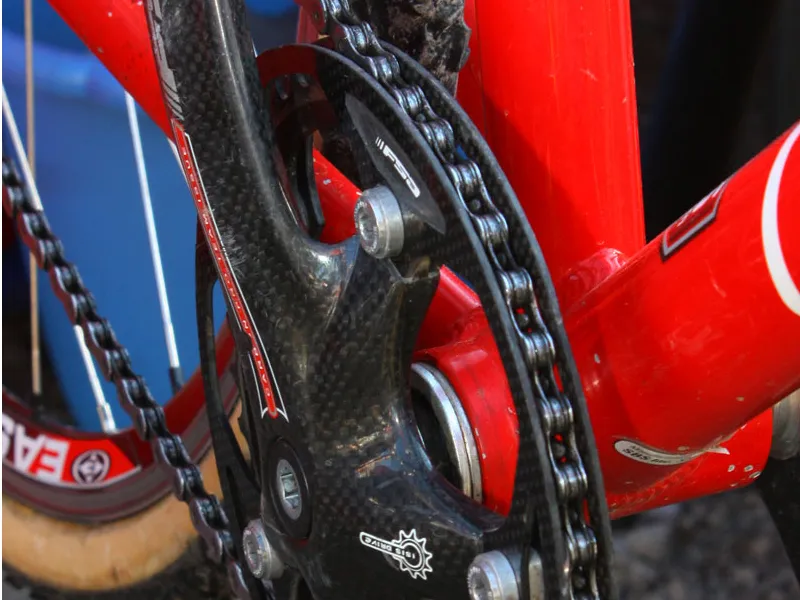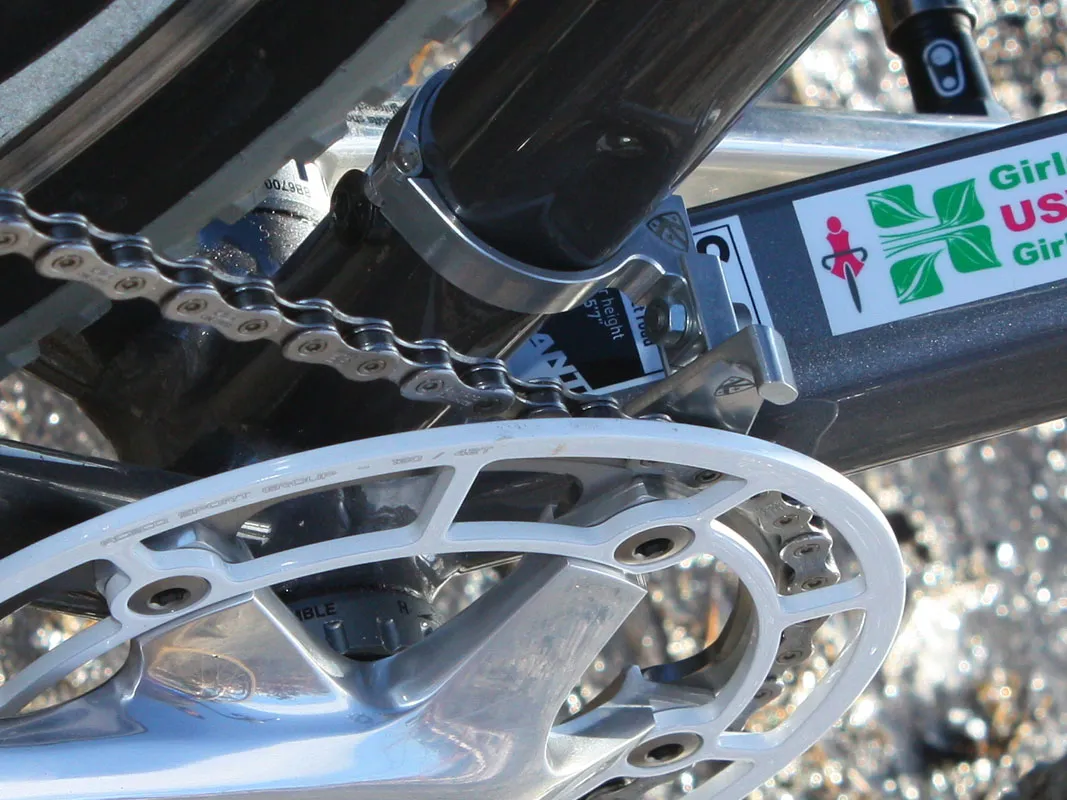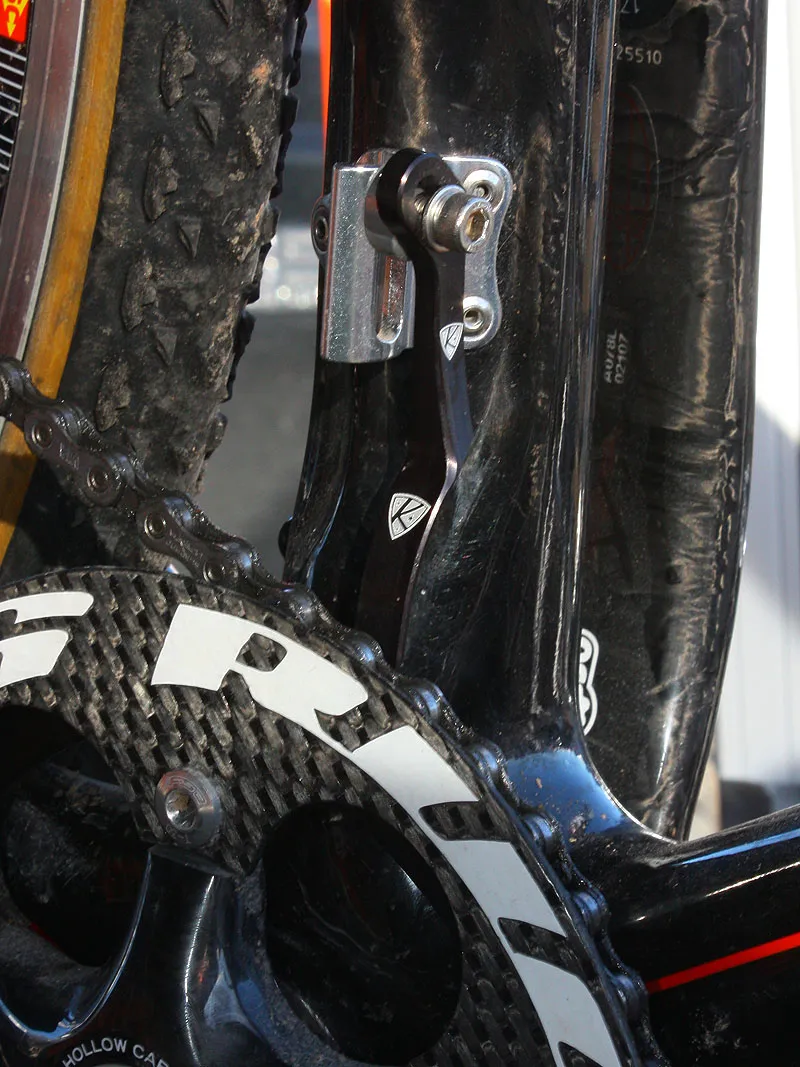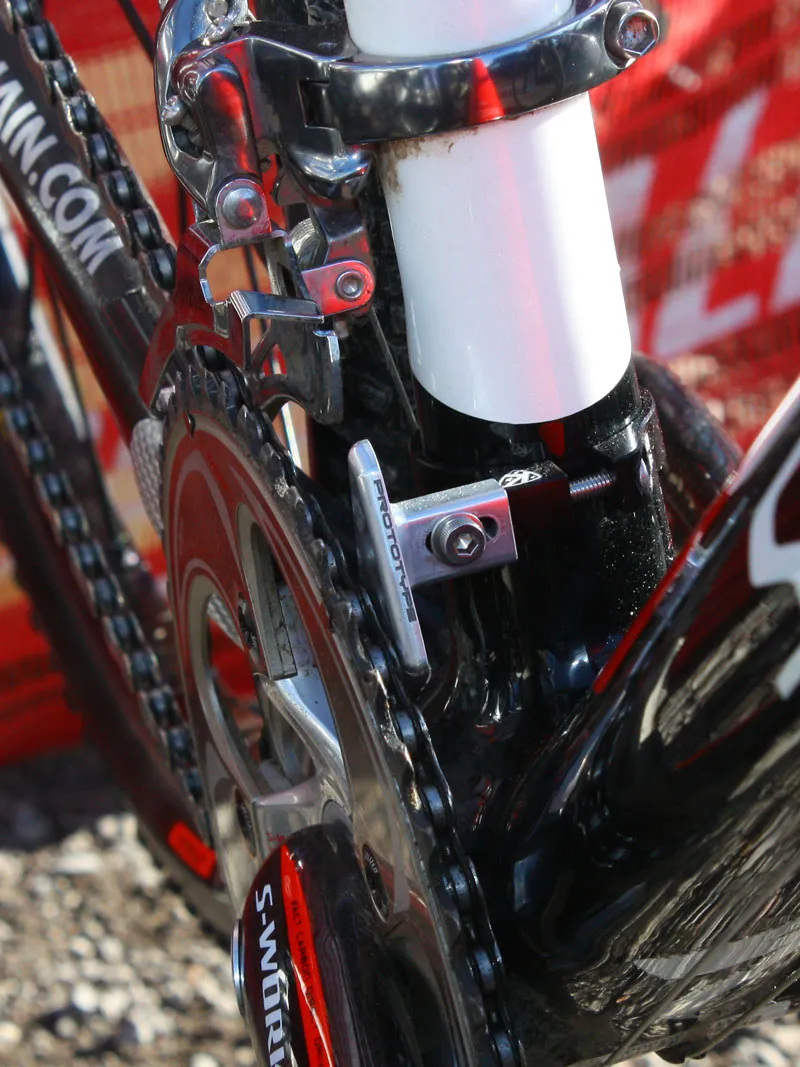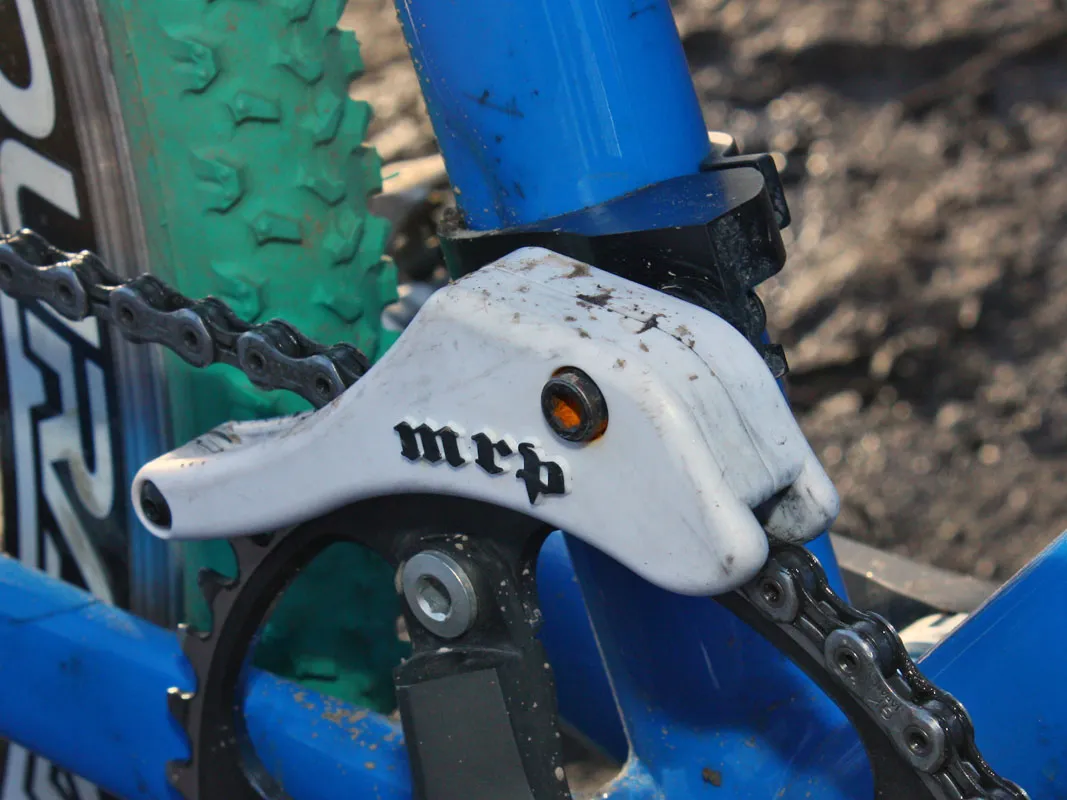An increasing number of cyclo-cross racers are choosing to run a single-chainring drivetrain to reduce the chance of mechanical failure and debris buildup, as well as drop a few grams.
Yet as riders aim to simplify their machines, they often make some compromises to save weight and not every method is as effective as others. Single-ring setups at the weekend's US cyclo-cross national championships ran the gamut of possibilities.
The simplest configuration was merely running dual plate-style guards on either side of the ring (not unlike what you see on some children's bikes), closely followed by a similar option that included an outer guard plus a seat tube-mounted chain catcher such as those from Third Eye or N-Gear.
Both of these setups are light but neither incorporates any provision for retaining the chain from above – both the Third Eye and N-Gear bits were originally designed to work in conjunction with a conventional front derailleur to prevent multiple-ring drivetrains from overshifting to the inside. As a result, it's still possible to lose your chain during a particularly bumpy section or in a crash.
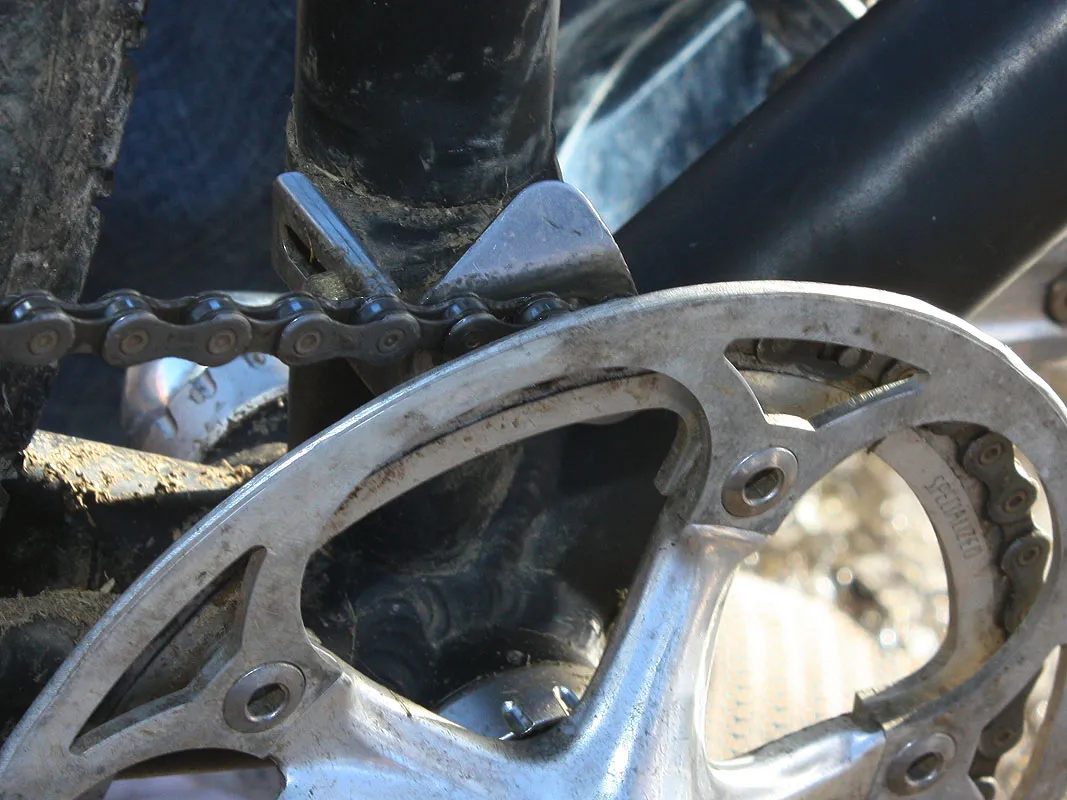
One of the more popular single-ring setups – an outer plate-style guide and inner chain watcher
Cyclo-cross's surging popularity has prompted better solutions as of late, though, with component manufacturers finally starting to figure it out. Just as in downhill mountain bike racing, the key is making sure the chain is restricted from excessive movement in all directions, not just to the inside or outside.
AceCo's latest K-Edge Single – as used by second-place finisher Amy Dombroski (Schlamm p/b Clement and Primus Mootry) is similar to the N-Gear, with a mostly flat inner plate to keep the chain from falling to the inside, but it also features a small tab up top to secure the chain from above.
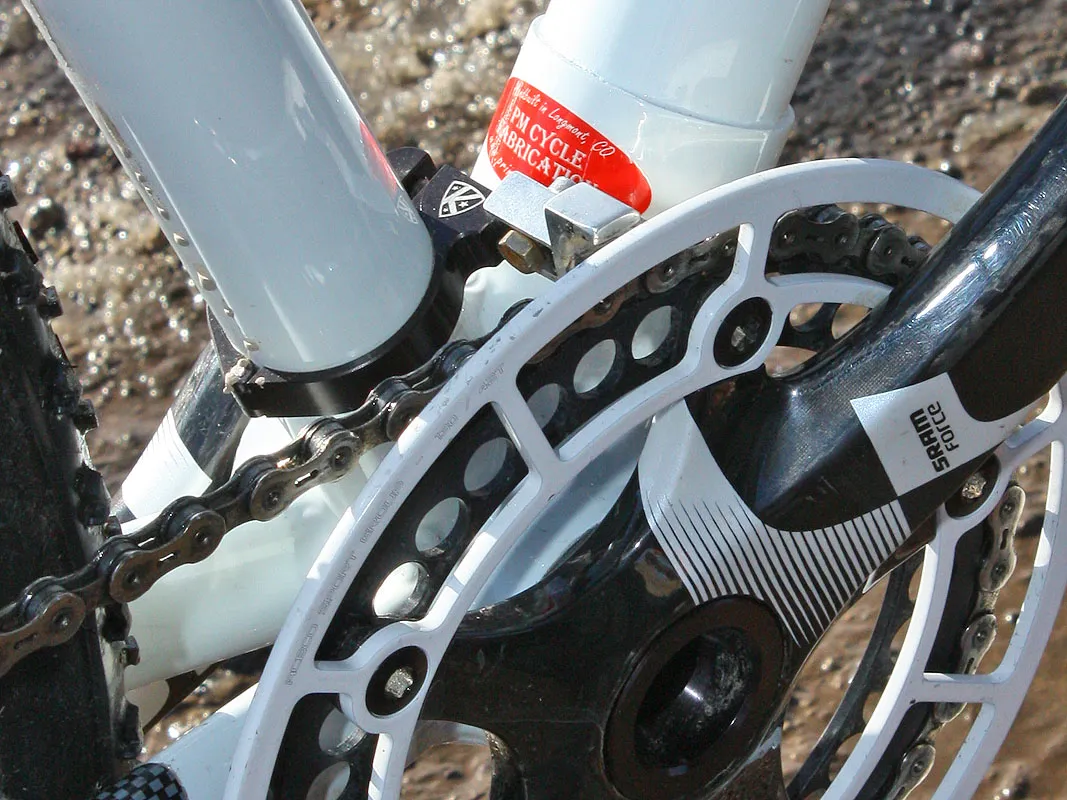
Amy Dombroski's AceCo K-Edge setup allows enough vertical movement for the Rotor Q-Ring
When paired with a suitable outer guard (from AceCo or otherwise), it's nearly impossible to lose the chain even in a crash and in the unlikely event that it comes off the bottom of the chainring – say if back-pedalling during a rough section – you can simply pedal forward and carry on.
Mafia Racing's Jake Wells didn't wait for AceCo, however, and cooked up his own similar solution. Wells discovered that mounting an N-Gear Jump Stop upside down and bending the upper section of plate down over the chain provided the same end result.

Mechanic Tom Hopper crafted this solution for Jake Wells
Given its background, it's not surprising that Grand Junction, Colorado-based MRP's 1.X range takes the downhill racing theme most literally with an adjustable full box-type guide that envelopes the chain on both the inner and outer sides and the top. Though bulkier than other options, MRP's device looks ultra-secure and doesn't require an outer plate-style guide at all to be effective. This was the choice for Giant riders Adam Craig and Carl Decker.
If you opt for just one ring – mountain bikers should note that these solutions will work in that discipline as well – these solutions mean you no longer have to make compromises in your quest for simplicity. However, there are no longer any good excuses not to get it right. As many riders who use insufficient single-ring setups can attest, it takes just as long to get a chain remounted as it would with a two-ring drivetrain and it feels just as frustrating.

Giant riders Adam Craig and Carl Decker use MRP's downhill-inspired 1.X guide
You can follow BikeRadar on Twitter at twitter.com/bikeradar.
